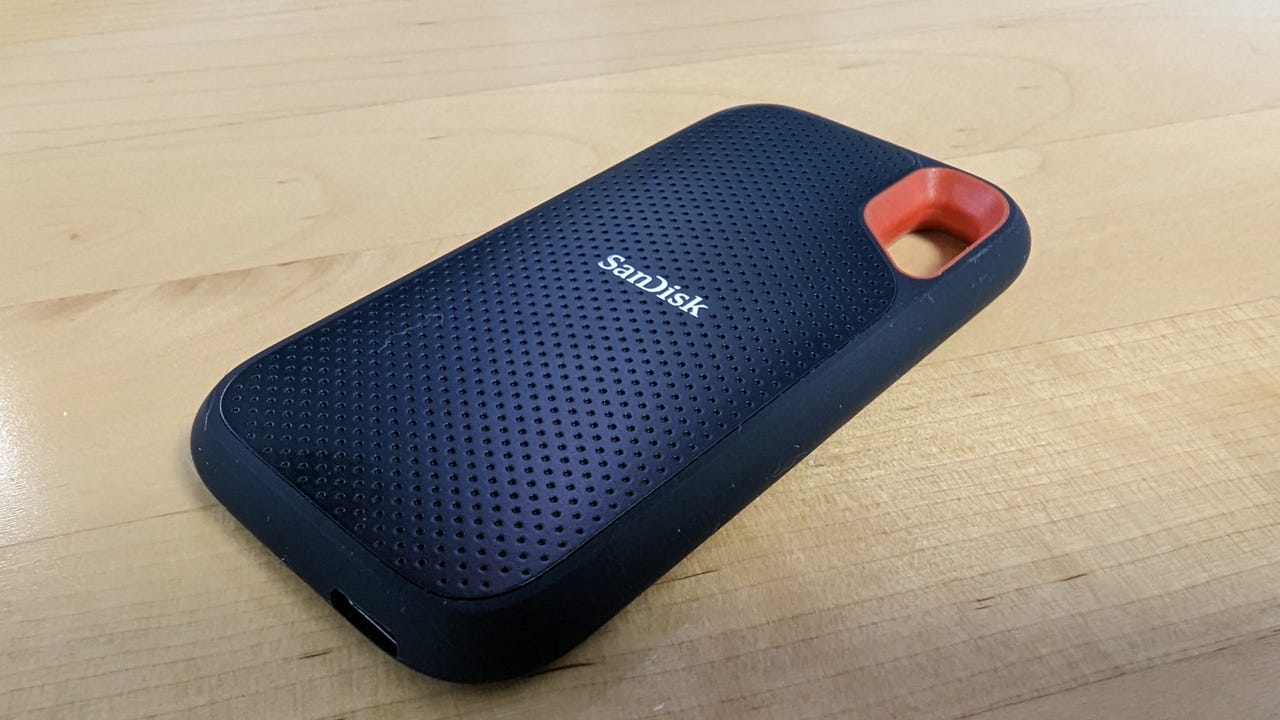Running out of storage? This rugged SSD can save your computer before it gets worse

I render a lot of videos with Final Cut Pro. One of the caveats of using that application is that it saves video libraries which can get very large. For example, I’ve had video library files reach up to nearly half a terabyte. Prior to using external drives for these libraries, I found my iMac nearly unresponsive because the internal hard drive was full. It took some serious patience to figure out what was happening and how to resolve it (without losing my video files).
Also: SSD vs HDD: What’s the difference, and which should you buy?
Since that incident, I’ve depended on external drives to house my Final Cut Pro video libraries. By doing this, I can be certain the drive containing the macOS operating system won’t have problems because of a lack of storage space. In fact, I spread my video libraries out between two external SSD drives now.
The SSD drives I’ve chosen are a pair of SanDisk 2TB Extreme Portable SSD. They are small, fast, rugged, and have the write speeds necessary to allow Final Cut Pro to render videos without problems. Since adopting these drives, I haven’t had a single issue with Final Cut Pro (at least with regard to library storage).
ZDNET RECOMMENDS
SanDisk 2TB Extreme Portable SSD
A compact, rugged memory drive that comes in storage sizes of up to 4TB.
The specs
When choosing a drive for video rendering, you don’t want to just select any cheap drive available. Size and write speed are the two most important factors. The specs for the Sandisk Extreme Portable SSDs look like this:
- Write speeds – 1,000MB/s
- Read speeds – 1,050MB/s
- Interface – USB-C, USB 3.2 Gen 2
- Protection – IP55 dust/water resistant, up to 2-meter drop protection
- Encryption – 156-AES hardware encryption
- Dimensions – 0.38 x 2.07 x 3.97 inches
Also: What do all those microSD and SD card numbers and letters mean?
Of course, these are SSDs, so the performance is perfectly suited for rendering videos with professional applications. These drives also include a handy carabiner loop, so you can carry them with you wherever you go.
The carabiner loop makes it easy to carry these drives around. Jack Wallen/ZDNET
My experience with the drives
Since I purchased two 2TB SanDisk SSDs (you can also get them in 500GB, 1TB, 2TB, and 4TB), I’ve found video rendering isn’t quite as fast as it is when rendering to the iMac internal storage (as those drives have much faster read/write speeds), but it is more reliable.
The drives can be easily formatted to use with any operating system (using built-in tools), so they can be used with Linux, macOS, or Windows. And with the Sandisk SSDs, I no longer have to worry about filling up internal storage and I can even remove a drive, connect it to my MacBook Pro, fire up Final Cut Pro and open the library on the SanDisk.
Also: I tested the latest M.2 SSDs, and these are the ones I recommend
And even with the slower read/write speeds, videos still render quickly enough and never have any problems. Given the relatively low cost, these external drives have definitely been worth the money.
What about non-video needs?
Not everyone is rendering videos. If you only need an external storage device for more traditional files, these drives are just as applicable. Not only because of the cost and performance, but the portability is a big plus. I’ve pocketed these drives, tossed them into packs, carried them around just about everywhere, and never had a single issue. The Sandisk Extreme Portable SSDs can take a beating and still perform.
So, whether you’re looking for a portable external drive for video rendering, documents, photos, or just about any file type, you cannot go wrong with these ones from SanDisk that I’ve tested.
For all the latest Technology News Click Here
For the latest news and updates, follow us on Google News.
